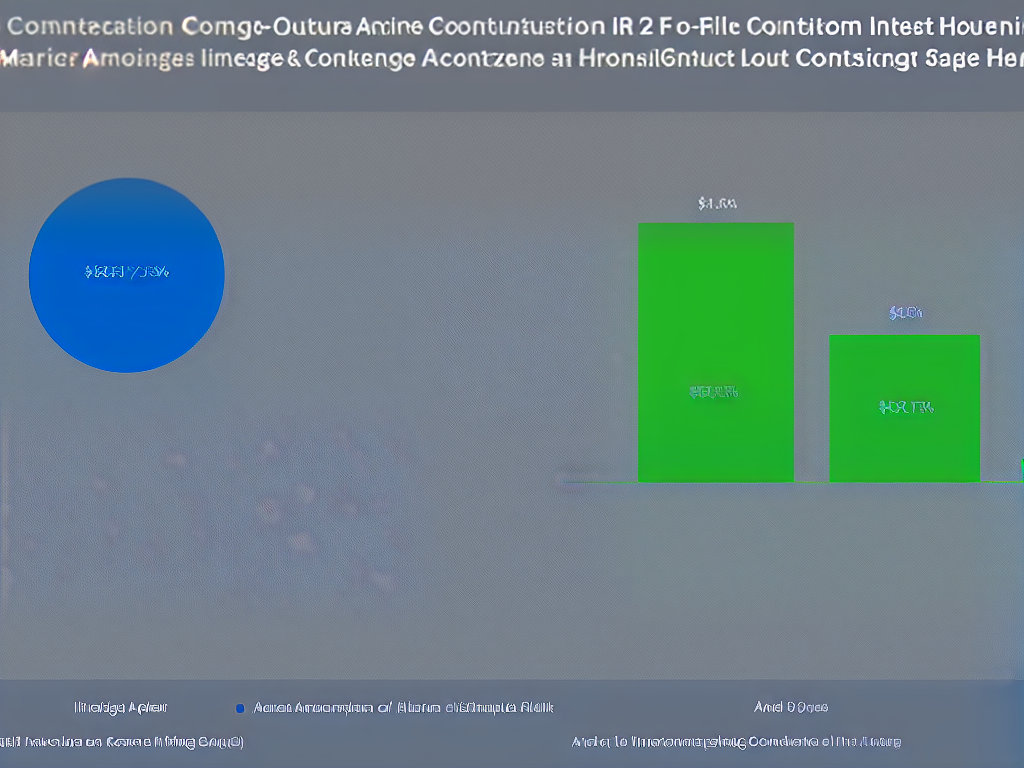IRA Contribution Deadlines
As we move through various stages of our lives, a comprehensive understanding of Individual Retirement Accounts (IRAs) and the implications of investing in them becomes increasingly essential. With numerous options for retirement savings, the process can seem daunting. To better grasp the intricacies of IRAs, this essay delves into its basics, contribution limits, income restrictions, deadlines, investment options, tax implications, retirement planning, and distribution rules. By educating ourselves on the subject, we can make informed decisions that cater to our personal financial situations and strive toward the ultimate goal of a comfortable and secure retirement.
Understanding IRA Basics
Individual Retirement Accounts (IRAs) are crucial for adults saving for their retirement. Two primary types of IRAs, Traditional and Roth, offer individuals the ability to invest in a range of assets, including stocks, bonds, and mutual funds.
Traditional IRAs allow individuals to grow their savings tax-deferred, while Roth IRAs are funded with after-tax dollars and offer tax-free earnings and withdrawals. It is essential to consider contribution deadlines for maximizing savings potential. The deadline for contributing to an IRA is typically April 15th of the following year.
Both Traditional and Roth IRAs have specific limits and restrictions and require a thorough understanding to avoid possible penalties. For the 2021 and 2022 tax years, the maximum contribution limit for both types is $6,000, with an additional $1,000 catch-up contribution allowed for individuals aged 50 and over. Roth IRA contributions are limited by income.
Adults can maximize the benefits of Individual Retirement Accounts (IRAs) and secure a comfortable retirement by considering their financial circumstances and making well-informed choices.

Contribution Limits
To do this effectively, it’s crucial to understand the contribution limits for IRAs, which are set each year by the IRS based on factors such as inflation and cost of living adjustments. These limits may vary depending on your age, income, and the specific type of IRA you hold, making it essential for maximizing your retirement savings and ensuring compliance with tax regulations.
For the 2021 tax year, the contribution limit for both traditional and Roth IRAs is $6,000 for individuals under 50 years of age, and $7,000 for individuals 50 years and older. These limits are the same as for the 2020 tax year, suggesting that there was no significant change in economic factors that would prompt an increase in the maximum contribution amount.
It is important to note that these limits apply to the total contributions made to both types of IRAs, rather than each account individually. For example, if you contribute $3,000 to a traditional IRA, you can only contribute up to $3,000 to a Roth IRA for the same tax year.
Catch-up contributions are a notable feature for individuals aged 50 and above, allowing them to save more money in their retirement accounts as they approach retirement age. This additional $1,000 contribution limit is intended to help older individuals who may not have saved enough earlier in their working years or who wish to boost their savings before they retire. To be eligible for catch-up contributions, the individual must turn 50 before the end of the tax year and have earned income that equals or exceeds the total amount contributed to their IRA during the year.
IRA contribution limits may be affected by your modified adjusted gross income (MAGI), which can restrict or eliminate the amount you’re allowed to contribute. For Roth IRAs, income restrictions apply, with phase-out ranges starting at $125,000 for single filers and $198,000 for married couples filing jointly in 2021. If your MAGI is above these limits, your eligible contribution may be reduced or eliminated altogether. For traditional IRAs, your ability to deduct contributions may be affected by your MAGI if you or your spouse are covered by a workplace retirement plan, such as a 401(k).
Staying informed about the annual changes in IRA contribution limits, income restrictions, and catch-up contribution amounts is essential. Keeping track of these numbers not only ensures compliance with tax regulations when contributing to your retirement account but also enables you to optimize your contributions and reach your financial goals more effectively. Regularly reviewing these limits and adjusting your contribution strategy accordingly can help provide a more secure and comfortable retirement.

Income Restrictions
Understanding the income restrictions for Traditional and Roth IRAs is crucial when considering these contributions. Traditional IRAs allow pre-tax contributions, which can lower your taxable income for the year, while Roth IRA contributions are made with after-tax dollars. Being aware of these restrictions not only determines your eligibility to contribute to these accounts but also helps you better decide which type of IRA will provide the most tax benefits, further optimizing your savings strategy for a financially secure retirement.
For Traditional IRAs, there is no income limitation on making contributions, but there are limits on the tax-deductibility of these contributions based on your income and participation in employer-sponsored retirement plans, such as a 401(k). If you are covered by a workplace retirement plan and your income is above a certain threshold, your tax-deductible contributions to a Traditional IRA will be phased out. For single filers and heads of household covered by a workplace plan in 2022, the deduction phase-out range is between $68,000 and $78,000 of Modified Adjusted Gross Income (MAGI). For married couples filing jointly, the deduction phase-out range is between $109,000 and $129,000 of MAGI, and for married couples filing separately, the range is between $0 and $10,000.
On the other hand, income restrictions for Roth IRAs determine your eligibility to contribute to the account, rather than the tax-deductibility of the contributions. In 2022, if your MAGI is less than $129,000 as a single filer or head of household, or below $204,000 for married couples filing jointly, you can contribute the maximum annual amount ($6,000 or $7,000 if 50 or older) to a Roth IRA. Contribution limits phase out as MAGI increases, with the phase-out range starting at $129,000 for single filers and $204,000 for joint filers, and contributions become completely ineligible once MAGI exceeds $144,000 for single filers or $214,000 for joint filers.
Another factor to consider is the deadline for making IRA contributions. Unlike other investing deadlines that fall at the end of the calendar year, the deadline for contributing to an IRA for a given tax year is the same as the tax filing deadline for that year, typically April 15th of the following year. This means that you can potentially lower your taxable income for the prior year even after the calendar year has ended, by contributing to a Traditional IRA before the April deadline.
When it comes to saving for retirement, it is essential to be aware of the deadlines associated with contributing to various types of individual retirement accounts (IRAs). There are different deadlines and guidelines when considering contributions to Traditional IRAs, Roth IRAs, and SEP IRAs. Understanding the nuances of each deadline can be critical to ensuring that you maximize tax benefits and avoid penalties associated with late or excess contributions.

IRA Contribution Deadlines
Bear in mind that the above information relates specifically to the IRA contribution deadlines and does not cover other rules that may apply to your tax situation. To ensure you make the right decisions with regard to IRA contributions, it is recommended to consult with a financial advisor or tax professional who can take a holistic view of your individual financial circumstances. Additionally, it is important to stay informed of any changes to the income and contribution limits and phase-out ranges, which can be adjusted each year due to inflation or changes in tax law.
Generally, the deadline for making IRA contributions for a given tax year is the same as the federal tax filing deadline, typically falling on April 15th of the following year. For instance, for the tax year 2021, the deadline to make contributions to a traditional or Roth IRA is April 18, 2022, due to the federal tax filing deadline extension. It is essential to verify these deadlines annually, as they may change due to weekends and holidays, or through emergency legislation. It’s important to note that the IRA contribution deadline is not dependent on whether you file for a federal tax extension. However, if you are contributing to a SEP IRA, the deadline is extended to the business tax return deadline, including any extensions filed.
Maximizing your IRA contributions before the deadline is crucial for tax planning. For a traditional IRA, contributions are tax-deductible, thereby potentially lowering your taxable income for the year. However, deductibility may be phased out for higher-income earners who also participate in an employer-sponsored retirement plan. Understanding the income limits and deductibility rules will be crucial to accurately calculate your tax liability. In contrast, Roth IRA contributions are made with after-tax dollars and grow tax-free, providing no immediate tax deduction. However, this allows for tax-free withdrawals in retirement.
There are consequences for missing the IRA contribution deadline. If you fail to make your contributions before the deadline, you lose the opportunity to lower your tax liability and save for retirement in that specific tax year. Unfortunately, taxpayers can’t make up that missed opportunity in future years, as the maximum annual contribution limits apply, which may hinder the account’s growth potential. Additionally, taxpayers should be aware of excess contributions, as they can incur a 6% excise tax if not corrected on time or if early distributions are taken.
It’s important to monitor the Internal Revenue Service (IRS) guidelines and deadlines as regulations can change from year to year. Planning ahead and tracking these deadlines can ensure proper tax planning and maximize the potential for account growth. Contributing early in the tax year may generate a more substantial potential return on investment, making it essential for every adult to prioritize retirement savings and be aware of the IRA contribution deadlines for each tax year.

Investment Choices
Furthermore, being aware of the wide array of investment options available within Individual Retirement Accounts (IRAs) is crucial for making informed decisions and optimizing retirement savings. Choosing the right investment vehicles becomes even more important with the strict deadlines for IRA contributions, which typically fall on the tax filing deadline for any given year, usually April 15th. Consequently, understanding the different investment choices and their characteristics is imperative in order to make the most of your IRA contributions before the deadline arrives.
Stocks are considered an essential component of an IRA investment portfolio, mainly due to their potential for high returns over the long term.
Investing in individual stocks within an IRA allows you to grow your money tax-deferred, offering the opportunity for capital appreciation and dividends without the need to pay taxes on realized gains until you decide to withdraw the funds in retirement. However, the high potential returns come with a higher degree of risk, making it necessary to consider your risk tolerance and financial goals when incorporating stocks in your IRA.
Bonds, on the other hand, are generally considered a more conservative investment choice, as they have lower risk than stocks.
When you invest in bonds within an IRA, you essentially lend money to a corporation or government agency, which provides regular interest income while preserving your principal upon bond maturity.
This makes bonds an attractive option for investors who are closer to retirement, seek lower-risk alternatives, or simply want to diversify their IRA portfolios.
Mutual funds are another popular investment option within IRAs.
They consist of pooled investments in various assets, such as stocks, bonds, and money market instruments. Investing in mutual funds provides diversification benefits, professional management, and the possibility to invest in a broad range of industries and sectors.
This allows you to spread risk and take advantage of different segments of the market.
Moreover, you can either opt for actively managed funds, where the manager makes the investment decisions, or passively managed index funds, which track a specific market index performance.
Diversification is a critical concept to grasp when investing in an Individual Retirement Account (IRA).
By allocating your assets across various investment vehicles, such as stocks, bonds, and mutual funds, you can potentially reduce the overall risk of your portfolio and increase the chances of long-term growth.
It is essential to strike a balance between risk and reward in the context of your IRA, as investing too conservatively may stunt your portfolio’s growth over time, whereas overly aggressive investments can lead to substantial losses.
Therefore, understanding the different available investment choices, their potential risks and rewards, and the power of diversification is a key factor in making the most of your IRA contributions before the annual deadline.

Tax Implications
Additionally, considering the tax implications of contributing to an IRA is crucial. Understanding the potential deductions and credits can be beneficial and greatly impact your overall financial strategy.
By connecting the knowledge of diversification within your IRA investments and the tax advantages provided, you can make informed decisions and potentially maximize your long-term retirement savings.
Traditional IRA contributions may be tax-deductible, depending on your income, filing status, and if you or your spouse are covered by a retirement plan at work. In general, the lesser your income and the more you contribute, the higher the tax deduction. For 2021, the maximum contribution limit is $6,000, or $7,000 if you are 50 years old or older. It is important to note that the deadline for contributing to an IRA for a specific tax year is typically the tax filing deadline (usually April 15) of the following year.
The tax treatment of withdrawals, or distributions, from an IRA depends on whether you have a traditional IRA or a Roth IRA. Traditional IRA withdrawals are taxed as ordinary income, with the tax rate depending on your income-bracket. However, early withdrawals (before age 59.5) are subject to a 10% penalty in addition to regular income tax, unless they qualify for an exception. On the other hand, Roth IRA withdrawals are generally tax-free as long as the account has been open for at least five years and you are at least 59.5 years old. If you are younger than 59.5 and take a non-qualified withdrawal from a Roth IRA, you may face the same 10% penalty on the earnings portion of the withdrawal.
Roth conversions, or converting a traditional IRA to a Roth IRA, can be a strategy for tax diversification during retirement. Converting a traditional IRA to a Roth IRA involves paying income taxes on the pre-tax contributions and earnings in the traditional IRA. However, this can provide an opportunity to pay taxes at today’s rates, rather than potentially higher future rates. Additionally, since Roth IRAs do not have required minimum distributions (RMDs), converting to a Roth can provide more flexibility in retirement income planning.
Another tax implication to consider is the Saver’s Credit, a non-refundable tax credit for eligible taxpayers who contribute to an IRA or another retirement plan. The Saver’s Credit depends on your modified adjusted gross income (MAGI), filing status, and the amount you contribute. For 2021, the maximum credit is $1,000 for individuals and $2,000 for married couples filing jointly. However, keep in mind that to claim the Saver’s Credit, you must make retirement contributions by the IRA contribution deadline for the specific tax year.
Understanding the various tax implications related to IRA contributions is crucial for strategically planning your retirement finances. By optimizing your contributions, withdrawals, and potential Roth conversions, you can create a more secure retirement and reduce your overall tax liability. Staying informed about deadlines, limits, and rules surrounding these accounts is key to making well-informed decisions that benefit your financial future.

Retirement Planning
To create a comprehensive retirement strategy, it’s important to consider how IRA contributions fit with emergency savings, employer-sponsored plans, and other investment vehicles. The IRA contribution deadline is an essential tax-planning consideration, as it provides an opportunity to reduce taxable income for the previous year and allows more time for investments to grow tax-deferred. Balancing these elements will help you develop a robust and well-rounded approach to your retirement planning.
Emergency Savings
Having adequate emergency savings is vital for long-term financial stability. Financial experts recommend having three to six months’ worth of living expenses in a readily accessible savings account. This emergency fund acts as a safety net in case of unexpected expenses or job loss, reducing the chance that you will need to tap into retirement accounts, such as IRAs and employer-sponsored plans, which can lead to penalties and jeopardize your retirement goals.
Leveraging Employer-Sponsored Plans
It is essential to leverage employer-sponsored plans, such as 401(k)s or 403(b)s, as these often provide a valuable employer match. By taking full advantage of the employer match, you can potentially double your contributions without additional out-of-pocket costs. Additionally, many employer-sponsored plans have more relaxed contribution deadlines, allowing for regular payroll deductions throughout the year. Since these deductions are taken pre-tax, you may also save on taxes while contributing to your retirement fund.
Other Investment Vehicles
Besides IRAs and employer-sponsored plans, other investment vehicles can provide further diversification for your retirement portfolio. For example, real estate investments, stocks, bonds, and mutual funds can all offer additional income streams and growth potential. These investments may also offer favorable tax treatment, such as interest from municipal bonds being tax-exempt or long-term capital gains being taxed at a lower rate than ordinary income.
IRA Contribution Deadlines
Understanding IRA contribution deadlines is crucial for maximizing your retirement savings. Traditional and Roth IRA contributions for a given tax year can be made up until the tax filing deadline, usually April 15th of the following year. This flexibility allows you to make additional contributions before filing your tax return if your circumstances change, such as receiving a year-end bonus or reducing your taxable income to qualify for other tax deductions or credits. By strategically planning your IRA contributions around these deadlines, you can effectively balance your retirement savings, emergency fund, and other investment strategies to secure your financial future.

IRA Distributions
IRA Distribution Guidelines
Along with understanding IRA contribution deadlines, it is also important to be familiar with the guidelines and rules regarding IRA distributions. This knowledge enables individuals to leave their money to grow in their accounts and avoid hefty tax consequences. Balancing your contributions and having a strong grasp of distribution rules will ultimately help you optimize your retirement savings and overall financial strategy.
One rule to be aware of is the required minimum distributions (RMDs), which are mandatory withdrawals that must be taken when the account holder reaches a specific age, typically 72. The RMD deadline is usually December 31 but may be extended for the first year to April 1 of the following year. This extension is only allowed in the first year of RMDs; in all subsequent years, the distributions must be taken by the end of the calendar year.
Premature withdrawals from an IRA also have rules and penalties that need to be taken into account. Generally, a withdrawal is considered premature if it occurs before the account holder turns 59 ½ years old. These premature withdrawals may be subject to penalties, such as a 10% early withdrawal penalty in addition to regular income taxes. There are, however, permitted exceptions to this penalty. These exceptions include permanent disability, unreimbursed medical expenses exceeding a certain percentage of the account holder’s adjusted gross income, or using the funds to purchase a first home.
Additionally, there are different distribution guidelines that apply to Roth IRAs, given that contributions are made with after-tax dollars. While Roth IRA contributions can be withdrawn penalty-free at any time, there is a five-year waiting period for the account holder to qualify for tax-free distributions on their earnings. This rule is applicable from the first tax year of the initial contribution, and subsequent contributions do not reset the clock. To maintain tax-free status, a Roth IRA distribution must also occur on or after reaching the age of 59 ½ or as a result of a permitted exception.
Another aspect of IRA distributions to be mindful of is the responsibilities that come with inheriting an IRA. The rules for beneficiaries of an IRA differ based on the relationship between the deceased account holder and the beneficiary. These differences can range from the timing and duration of withdrawals to whether or not the beneficiary can treat the IRA as their own. There are also specific distribution deadlines for IRA beneficiaries—the five-year rule, for instance, stipulates that the inherited IRA account should be completely liquidated within five years of the original account holder’s death.
It is essential to be aware of the rules and restrictions surrounding IRA distributions and how they correspond to contribution deadlines. This includes understanding the guidelines for required minimum distributions, the penalties for premature withdrawals, and the complexities of inherited IRAs. By effectively managing your IRA distributions, you can efficiently plan for your future, strengthen your retirement savings, and ensure that your investments are maximized for the greatest potential growth.

Through an in-depth examination of IRA contributions, deadlines, investment options, tax implications, and more, it becomes apparent that incorporating these versatile investment vehicles into our retirement planning strategy can ultimately lead to a more secure future. By understanding the complexities of IRAs, we can make informed decisions tailored to our unique financial situations, create diverse investment portfolios to mitigate risk, and ensure that we stay on track to achieve a comfortable retirement. The key takeaway from this discussion is that knowledge truly is power, and it empowers us to make the best choices for our financial future as we strive to build a prosperous retirement nest egg.



Leave a Reply